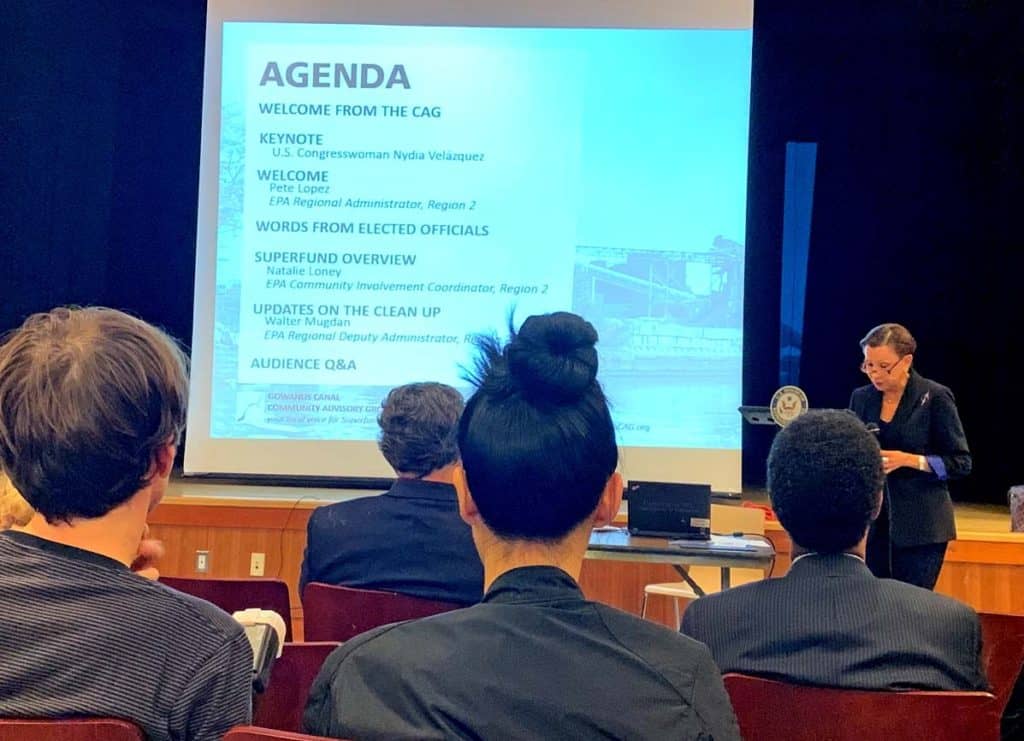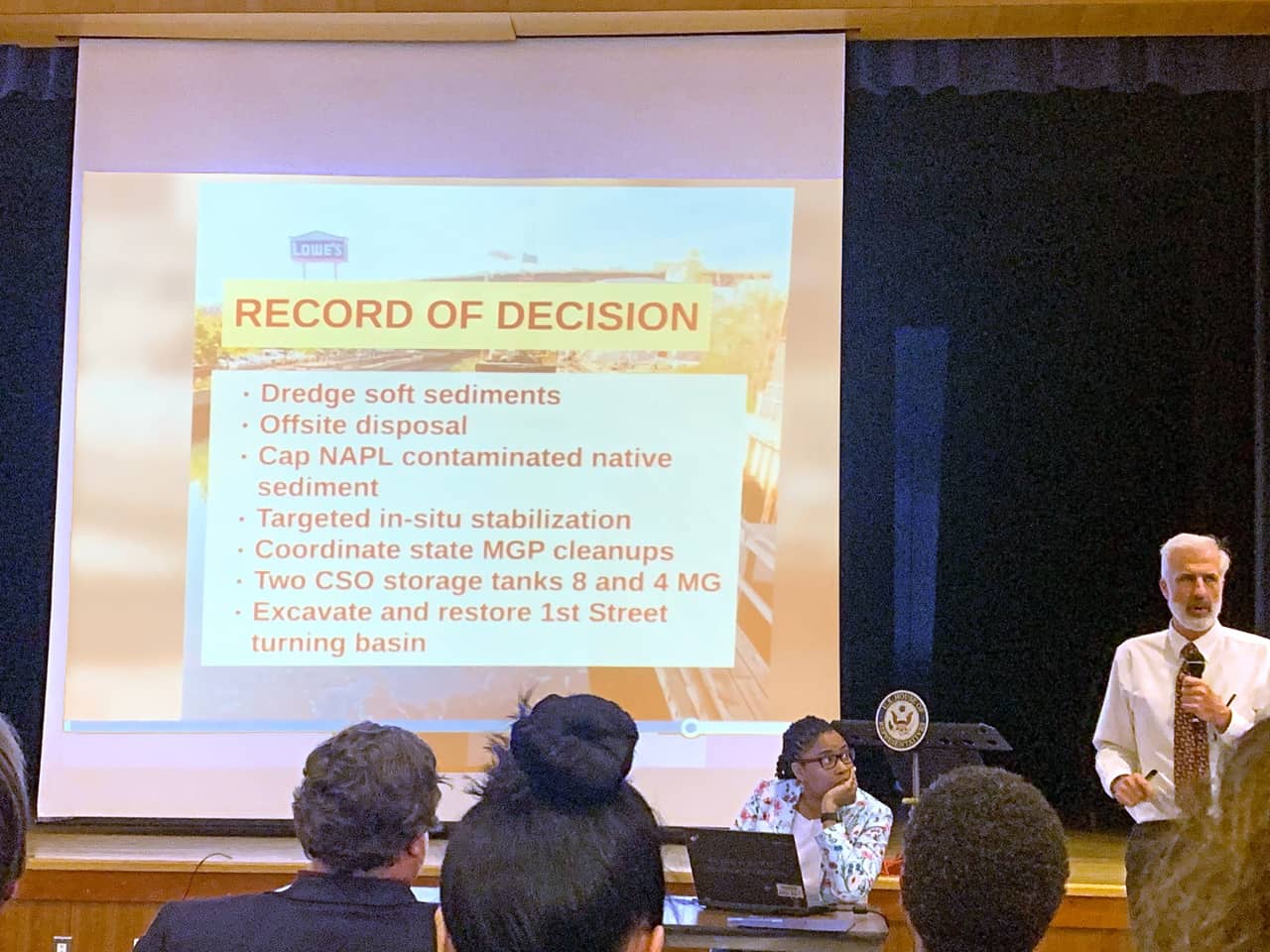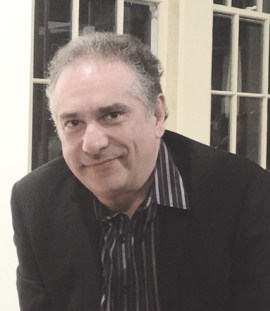Congresswoman Nydia Velázquez and the EPA provided updates regarding the Gowanus Canal cleanup at a 2019 Public Superfund Town Hall held May 29. The last town hall meeting, also hosted by the Gowanus Canal Community Advisory Group (CAG), took place in Nov. 2017.
Velázquez spoke first. “The Gowanus Canal is a high-profile Superfund site … because of all of you – the work, engagement, energy and hours that the CAG and other residents have put into this process – we’re seeing the results of that,” she said.
She said it’s vital that this “environmental sore spot” be remediated to keep contaminants away.
She recognized the city’s alternative plan for containing sewage overflows. Plans for two retention tanks have already been approved by the EPA, but at the 11th hour, the city proposed to replace the tank plan with a tunnel idea, claiming the tunnel would handle more overflow.
Deputy Regional Administrator Walter Mugdan said they’ll have meetings in June for a very detailed federal analysis and discussion of the tunnel proposal.
Mugdan also said that cleanup work under the outdoor pool at Thomas Greene Park won’t begin until a temporary pool is built for the neighborhood. The EPA has demanded remediation because toxins there have been leaching into the canal for the past century.

Velazquez addressed the current controversy regarding the long planned Gowanus rezoning. Activists are crying out that the cleaning of the canal will be spoiled by new buildings.
“It is important that any EIS [Environmental Impact Statement] needs to take into account the population that will be coming in – and if the plan, as it’s been designed, is taking into account the new people that will be coming in as a result of the rezoning,” she added. “My position has always been [that] we have one shot at getting this right, one shot.”
EPA addressed this a day earlier with an email sent to CAG members the day before the Town Hall. Senior Project Manager Christos Tsiamis wrote:
“In anticipation of potential redevelopment, the ROD requires that any future activities which fall under the City’s purview, including development, do not compromise the effectiveness of the Gowanus Canal remedy. Among other things, the ROD specifically states that ‘redevelopment projects will need to take mitigation measures to prevent or offset additional sewer loadings’ to the Canal to protect the remedy.”
Updates on the Cleanup
The Gowanus Canal was designated a federal Superfund site in 2010, initiating a complex, multi-year cleanup of more than a century’s worth of hazardous substances. EPA completed a successful pilot dredging and capping of the 4th Street turning basin last year – that portion of the canal is the cleanest it’s been in more than 100 years. Now the agency is turning its sights on the process of entirely cleaning the canal in the three segments, beginning at the head-end near Butler Street, in 2020.
As part of the plan, which is called the Record of Decision (ROD), the building of a cutoff wall will begin this month to isolate the worst of the contamination; this will mark the first real construction part of the project, according to Velázquez. The wall will be installed in front of the former Fulton manufacturing gas plant site (up at the top of canal), down to Union Street on the eastern side. The existing bulkheads there will also be replaced.
EPA Senior Project Manager Christos Tsiamis had explained, in detail, the upcoming timeline to the CAG a day earlier. The agency is currently reviewing the design for the tank at the top of the canal. Starting this month, noise barriers will be built and placed near the existing bulkheads at the top of the canal to accommodate the needs of the nearby Eastern Effects Studio. Then any debris that’s there and could interfere with the placement of the sheet piles will be removed during a two-month estimation. From September to November, sediment will be softened so that the hydraulic press used at the 4th Street Turning Basin (which didn’t produce any noise or vibrations) can advance up to the head of the canal. Come November, EPA will be putting in the 55-foot-long sheet piles from the top of the canal down to Union Street.
Nydia Velazquez concluded her remarks on the rezoning plans by saying: “We cannot afford to spend over $500 million to clean up, dredge, and restore the canal for families to enjoy and then compromise the health of the canal because of decisions driven by the real estate market and developers.”
Top photo of Walter Mugdan, speaking, taken by DeGregorio
Author
-

George Fiala has worked in radio, newspapers and direct marketing his whole life, except for when he was a vendor at Shea Stadium, pizza and cheesesteak maker in Lancaster, PA, and an occasional comic book dealer. He studied English and drinking in college, international relations at the New School, and in his spare time plays drums and fixes pinball machines.
View all posts
George Fiala has worked in radio, newspapers and direct marketing his whole life, except for when he was a vendor at Shea Stadium, pizza and cheesesteak maker in Lancaster, PA, and an occasional comic book dealer. He studied English and drinking in college, international relations at the New School, and in his spare time plays drums and fixes pinball machines.










